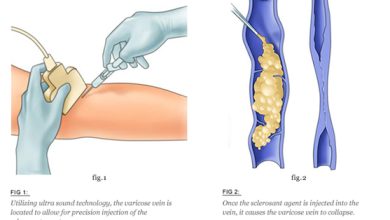Bone Marrow Transplant- Treating the Incurable

Bone marrow is a spongy tissue present in human bones like the thighs and the hips. People with specific blood-related conditions can reap benefits from bone marrow transplants to replace damaged cells with healthy cells. The bone marrow transplant is a lifesaver for people with conditions like leukemia, lymphoma, and cancer. Therefore, it is not wrong to say that it is quite helpful in treating incurable diseases. However, this type of surgery usually takes a long-time to recover. In this article, we will read about how bone marrow transplants can help in treating various diseases.
What is a Bone Marrow Transplant?
Bone marrow contains stem cells that help create red blood cells, white blood cells, and platelets. All these play a vital role in the health of any individual. When a medical condition occurs that damages the immune system or affects the blood, it prevents the body from creating healthy blood cells. Here, a bone marrow transplant becomes a necessary treatment option.
Which Health Conditions Require a Bone Marrow Transplant?
As mentioned above, the marrow makes three types of blood cells. These are red blood cells that transport oxygen, white blood cells fight off infection, and platelets help blood clot. When any of these get affected severely, the patient needs a bone marrow transplant. The following are the most common conditions which require this surgery.
- Blood cancers like leukemia or lymphoma
- Genetic or immune diseases like thalassemia or sickle cell disease.
- Bone marrow diseases like aplastic anemia
- Bone marrow damage because of radiation therapy or chemotherapy used for cancer.
- Blood cells deficiencies like Fanconi anemia
- Inheritance of blood disorders like adrenoleukodystrophy, hurler syndrome, etc.
In fact, unborn fetuses can also receive a bone marrow transplant known as an in-utero transplant for immunodeficiency syndromes.
How does Bone Marrow Transplant work?
A bone marrow transplant takes healthy blood-forming cells from the donor and then places them into the patient’s bloodstream. In the bloodstream, these cells start to grow and make healthy platelets, white blood cells, and red blood cells. To prepare a patient’s body for a bone marrow transplant, high doses of chemotherapy are given.
On the transplant day, patients get cells from the donor through medicine or blood through a tube or intravenous catheter. These cells can be donated from someone or stored cord blood unit, and sometimes patients can use their own blood-forming cells. When a person uses his own cells, it is known as an autologous transplant, and when cells are retrieved from a donor, it is known as an allogeneic transplant. Depending on the health status and the disease, the doctor can recommend an allogeneic or autologous transplant.
How to Prepare for Bone Marrow Transplant?
To prepare for a bone marrow transplant, the patient has to go through specific procedures and tests. There are a series of tests and procedures to analyze the condition as well as general health. These are basically to make sure that you are physically ready for the transplant. The evaluation can take many days. Besides this, a radiologist or surgeon will implant an intravenous catheter (thin tube) into a large vein of your neck or chest. This thin tube stays in place for your treatment duration. Moreover, the transplant team uses the central line in order to infuse the transplanted stem cells, blood products, and medications into the patient’s body.
What to Expect During and After Bone Marrow Transplant?
After pre-transplant procedures and tests, the conditioning process starts. During this process, the patient has to undergo possible radiation and chemotherapy. These suppress the immune system, destroy cancer cells, and prepare the patient body for the new stem cells.
Expectations during the process
The bone marrow transplant starts once the patient completes the conditioning process. On the transplant day, stem cells are infused into the body through the central line. This infusion process is painless, and the patient is awake during the procedure.
After the process
When the new stem cells enter the body, they reach the bone marrow through the blood. In some time, they begin to multiply and make new, healthy blood cells. This process is known as engraftment. This process generally takes several weeks before the blood cells in the body reach a normal count. In a few weeks after the transplant, the patients have to undergo various tests to monitor the condition. To manage the complications like diarrhea or nausea, doctors may prescribe some medications. After the surgery, a patient needs intensive care. Depending on the type of transplant, the patient has to stay in the hospital for a few weeks for close monitoring. Moreover, until your bone marrow starts producing sufficient cells on its own, a patient requires periodic transfusions of platelets and red blood cells.
In a nutshell, your bone marrow transplant success also depends on the type of medical facility you choose. You should research the best hospitals and the most experienced surgeons for your bone marrow transplant in Turkey. Lyfboat is the ultimate online destination that provides you with all such details, including the hospital facility, type of transplant, doctor experience, overall cost, and much more.
For more health related blogs visit our website.




